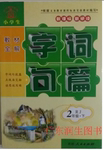题目内容
She says, "Something is wrong with my bike."She says that something is wrong with __ bike.
A. my B. a
C. his D. her

 教材全解字词句篇系列答案
教材全解字词句篇系列答案Michel is a young girl who works for the police 21 a handwriting expert. She has helped 22 many criminals by using her special talents When she was fourteen, Michel was already 23 interested in the differences in her friends' 24 that she would spend hours 25 them. After 26 college she went to France for a 27 two-year class in handwriting at the School of Police Science.
Michel says that it is 28 for people to hide their handwriting. She can discover 29 of what she needs to know simply 30 looking at the writing with her own eyes, 31 she also has machines 32 help her make 33 different kinds of paper and ink. This knowledge is often 34 great help to the police.
Michel believes that handwriting is a good 35 of what kind of person the 36 is. "I wouldn't go out with a fellow 37 I didn't like his handwriting.” She says. But she 38 she fell in love with her future husband, a young policeman 39 she studied his handwriting. It is later proved to be 40 , however.
|
1. |
|
|
2. |
|
|
3. |
|
|
4. |
|
|
5. |
|
|
6. |
|
|
7. |
|
|
8. |
|
|
9. |
|
|
10. |
|
|
11. |
|
|
12. |
|
|
13. |
|
|
14. |
|
|
15. |
|
|
16. |
|
|
17. |
|
|
18. |
|
|
19. |
|
|
20. |
|
When most people think of giant pandas, the pictures of the cute, black-and-white bears from China that eat bamboo will immediately jump into their mind. Scientists from Mississippi State University, however, are interested in what they leave behind: their poop(排泄物). At a recent meeting in Denver, Professor Brown at the university presented her research showing how panda poop could inspire a new way to obtain energy from plants, which are a renewable energy source. Usually, plants can be called biomass(有机燃料) when they are used as an energy source.
Burning biomass is one way to capture its energy, but Brown hopes panda poop can teach scientists something about breaking down biomass. Pandas—or at least the bacteria in their stomachs—are very good at getting energy out of bamboo. Unlike cows, which use 4 stomachs to digest large amounts of grass, a panda has only one stomach. Bamboo comes in, and poop goes out.
Every day for 14 months, Brown and her team on this project, counted the bacteria in the poop of the two pandas, YaYa and LeLe living at the Memphis Zoo. Her studies turned up 12 species of bacteria that break down biomass, including one that had never been found in pandas. Brown says that because the poop contains bacteria that break down biomass, it could also be used to break down other types of biomass.
Now the scientists hope to identify the chemicals that help with the process of breaking down biomass and then figure out how the bacteria work. If those chemicals can be made in the lab, they could be used to turn biomass—like grass or other plants—into fuel.
Brown says she doesn’t mind handling panda poop. “It’s probably the most pleasant material to work with,” she says, “My colleagues and I have been working with other poop for a long time, and we can assure you it has a fairly pleasant smell associated with it.”
1.The importance of studying panda poop is _______.
A. to create a renewable energy from plants
B. to explore a new way to get energy from plants
C. to learn a lesson of energy from panda poop
D. to figure out how the bacteria work for us mankind
2.The process of the panda poop project can be described as ______.
|
a. Identify the chemicals helpful to break down biomass. b. Find the bacteria in panda poop which break down bamboo. c. Reproduce the chemicals in the lab to turn biomass into energy. d. Analyze how the bacteria in panda poop work in panda’s stomach. |
A. a, b, d, c B. a, d, c, b C. b, a, d, c D. b, d, a, c
3.What does the author mainly want to express in the 2nd paragraph?
A. Pandas don’t digest bamboo the same way as cows.
B. Pandas are capable of getting energy using stomachs.
C. Pandas can get energy from bamboo more efficiently.
D. Scientists have learnt something new from panda poop.
4.What does Professor Brown think of working with panda poop?
A. Sick B. Challenging C. Inspiring D. Enjoyable